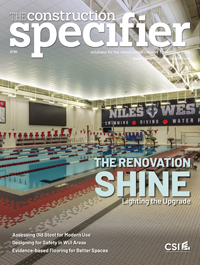Properly soldering no-lead copper alloys

by Andy Kireta Jr.
Last year, new federal guidelines were introduced, reducing the acceptable levels of lead that can be found in various plumbing components used for potable water applications. This change had a major impact on plumbing professionals, as well as the industry as a whole.
Manufacturers, retailers, plumbers, contractors, and technicians who make, sell, and install these newer, no-lead plumbing components and fittings had to ensure the proper soldering techniques were being applied so these products were safe to use in commercial, institutional, and residential applications.
Code changes
The Reduction of Lead in Drinking Water Act (RLDWA) was enacted by the federal government as a way to control the amount of bacterial and chemical contaminates in tap water that leached from pipes, faucets, and other plumbing fittings and components. RLDWA minimized the acceptable levels of lead in the nation’s supply of drinking water from those originally established in the Safe Drinking Water Act (SDWA) of 1974.
The significant reduction in allowable lead content—from eight percent of the total volume of the component, to a new weighted average of 0.25 percent of the total surface area of the component in contact with the water (i.e. wetted surface area)—affects the chemical composition of copper alloys that can be used for potable water applications, as well as the design of components made from these alloys.
While copper tube and fittings have always been lead-free—and been used to convey water for thousands of years—many copper alloys, such as brasses and bronzes, have included small amounts of lead in their composition to provide beneficial machining properties, allowing the manufacturing of complex parts. Across the industry, copper-based alloys are the most commonly used materials for valves, backflow preventers, faucets, and various other components for plumbing systems.
With the new RLDWA in place, the demand for working with no-lead/low-lead components has grown, and so did questions from the plumbing community on how to install them. Issues regarding the joining process between the copper tube and these new, no-lead copper alloys emerged, including:
- proper cleaning methods;
- acceptable flux types; and
- torch tip sizes.
As a result, contractors, installers, and plumbers were perplexed by the number of leaks and faulty joints they were seeing in the field despite using traditional soldering techniques.
The trade association representing the majority of U.S. copper tube and fittings industry, the Copper Development Association (CDA), was able to provide the technical guidance and resources to mitigate the soldering issues.
It assisted in developing the standard soldering procedures in the copper and plumbing industry, and has taught these procedures to installers. After more than a year of in-field and laboratory research with various installers, training facilities, and contractors, CDA came to the conclusion the problems were directly related to a misunderstanding, or in many cases, the misapplication of the industry standard soldering procedure. Those working with new no-lead copper alloys—such as bismuth, silicon, sulfur, or selenium—were not heating the joint correctly.
As some of the newer alloys have different thermal conductivity properties than their earlier counterparts, the proper amount of heat and the location where it is applied, plays a key role in the joining process. When using the new no-lead, brass and bronze copper alloys, the following four steps for properly soldering joints should be followed.



